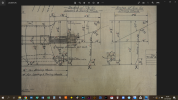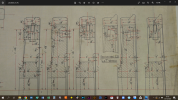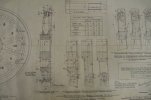Eastsidepilot
Western Thunderer
Thought this might be of interest...
Col.
Col.
Yes, it enabled it to traverse tighter radius curves than if it had all flanged wheels. The LNWR did it on the 0-8-0 'A' class loco's and I assume the other 0-8-0 class's.Was that how it was done on a 9F? I've no idea.
Tony
The first LNWR class A 0-8-0s were fully flanged, but after the first batch (20?) they went to flangless on the third pair and all subsequent engines were flangeless. Sorry, I have no idea about the width or the profile but since one is preserved that information must be known.The LNWR did it on the 0-8-0 'A' class loco's and I assume the other 0-8-0 class's.



 :
: